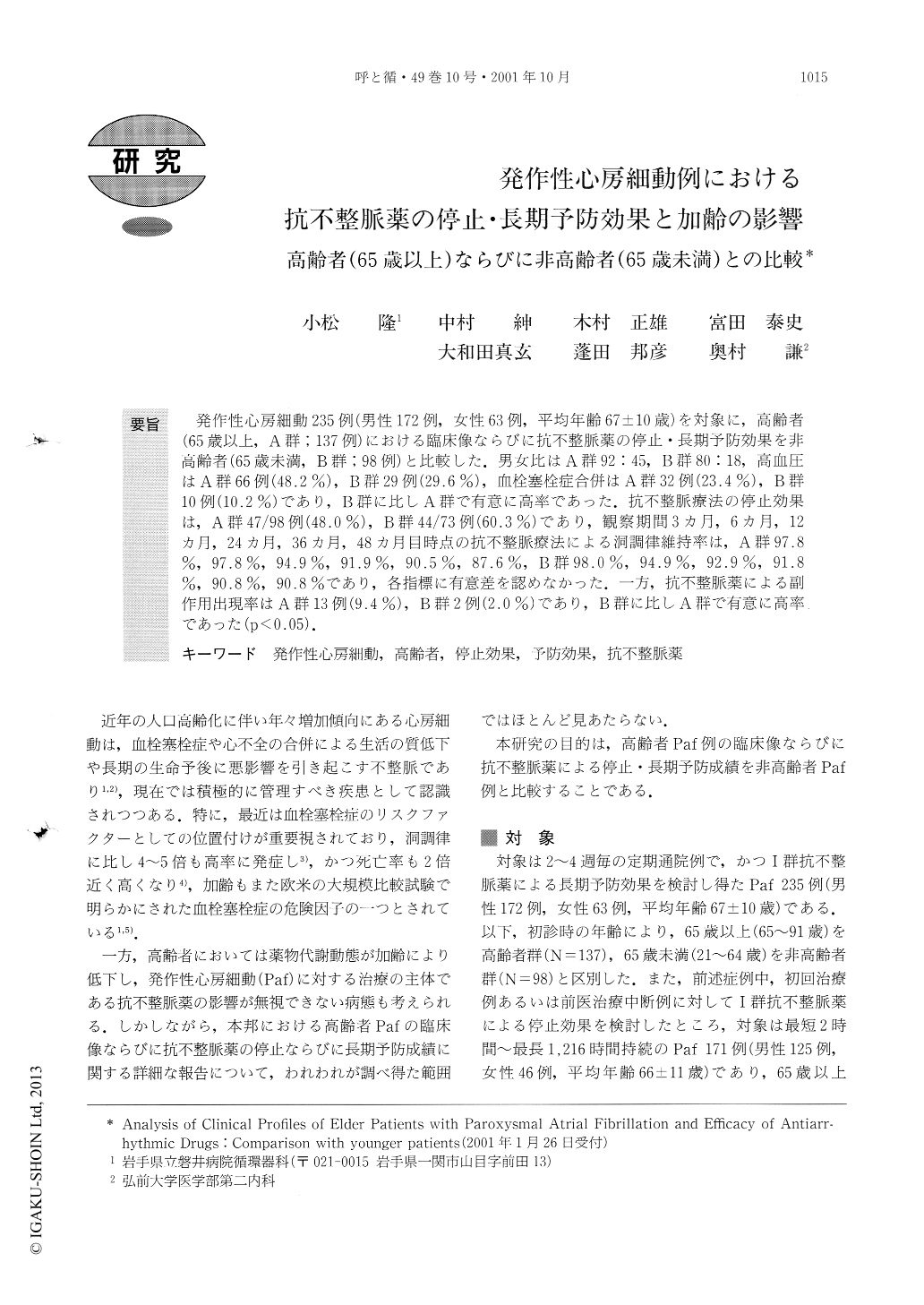Japanese
English
- 有料閲覧
- Abstract 文献概要
- 1ページ目 Look Inside
発作性心房細動235例(男性172例,女性63例,平均年齢67±10歳)を対象に,高齢者(65歳以上,A群;137例)における臨床像ならびに抗不整脈薬の停止・長期予防効果を非高齢者(65歳未満,B群;98例)と比較した.男女比はA群92:45,B群80:18,高血圧はA群66例(48.2%),B群29例(29.6%),血栓塞栓症合併はA群32例(23.4%),B群10例(10.2%)であり,B群に比しA群で有意に高率であった.抗不整脈療法の停止効果は,A群47/98例(48.0%),B群44/73例(60.3%)であり,観察期間3ヵ月,6ヵ月,12ヵ月,24ヵ月,36ヵ月,48ヵ月目時点の抗不整脈療法による洞調律維持率は,A群97.8%,97.8%,94.9%,91.9%,90.5%,87.6%,B群98.0%,94.9%,92.9%,91.8%,90.8%,90.8%であり,各指標に有意差を認めなかった.一方,抗不整脈薬による副作用出現率はA群13例(9.4%),B群2例(2.0%)であり,B群に比しA群で有意に高率であった(p<0.05).
To assess clinical profiles of high-aged patients with paroxysmal atrial fibrillation (Paf) and termination and long-term prevention effects of aggressive antiarrhythmic drugs, 235 patients (172 men, 63 women, mean age 67±10 years) were enrolled in a retrospective study (mean follow-up period 38.6±29.5 months). Successful termination with drugs was defined as defibrillation after intravenous injection of antiarrhythmic drugs within 30 minutes, and successful prevention of the arrhythmic recurrence was defined as the maintenance of sinus rhythm after aggressive antiarrhythmic treatment. The ratios of female (32.8% vs 18.4%), hypertension (48.2% vs 29.6%) and thromboembolism (23.4% vs 10.2%) in elder patients (65≧years, N=137) weresignificantly higher than those in younger patients (65<years, N=98) (p<0.05). There was no difference between elder and younger patients in the rates of termination of the arrhythmia (48% vs 60%) and prevention of the arrhythmia (88% vs 91%) at 48 months.
On the other hand, the incidence of side effects of antiarrhythmic treatment in elder patients (9A%) was significantly higher than that in younger patients (2.0%) (p<0.05).
These results suggest that antiarrhythmic drugs are equally effective in both elder and younger patients although adverse effects may develop more frequently among elder patients.

Copyright © 2001, Igaku-Shoin Ltd. All rights reserved.


